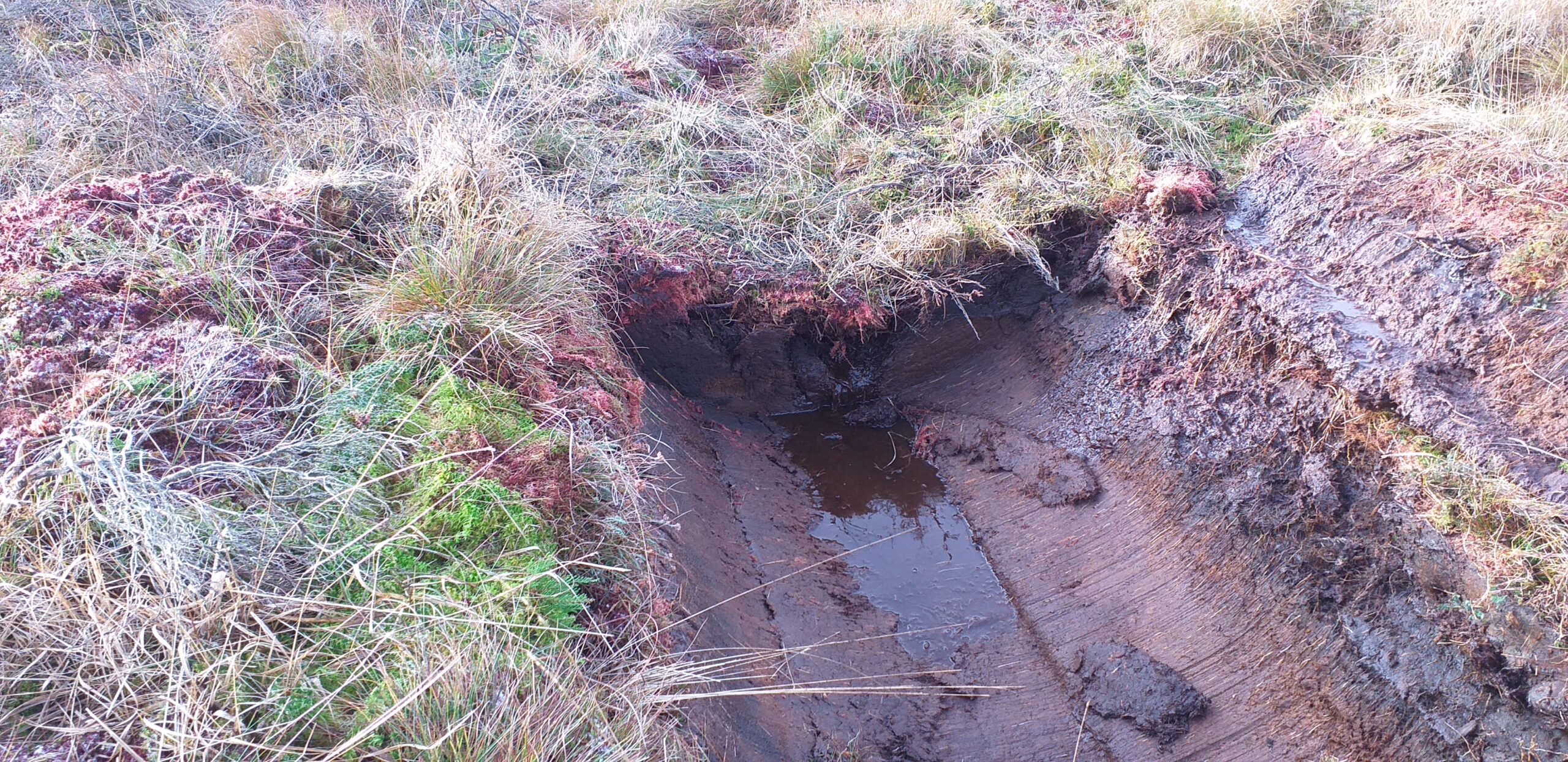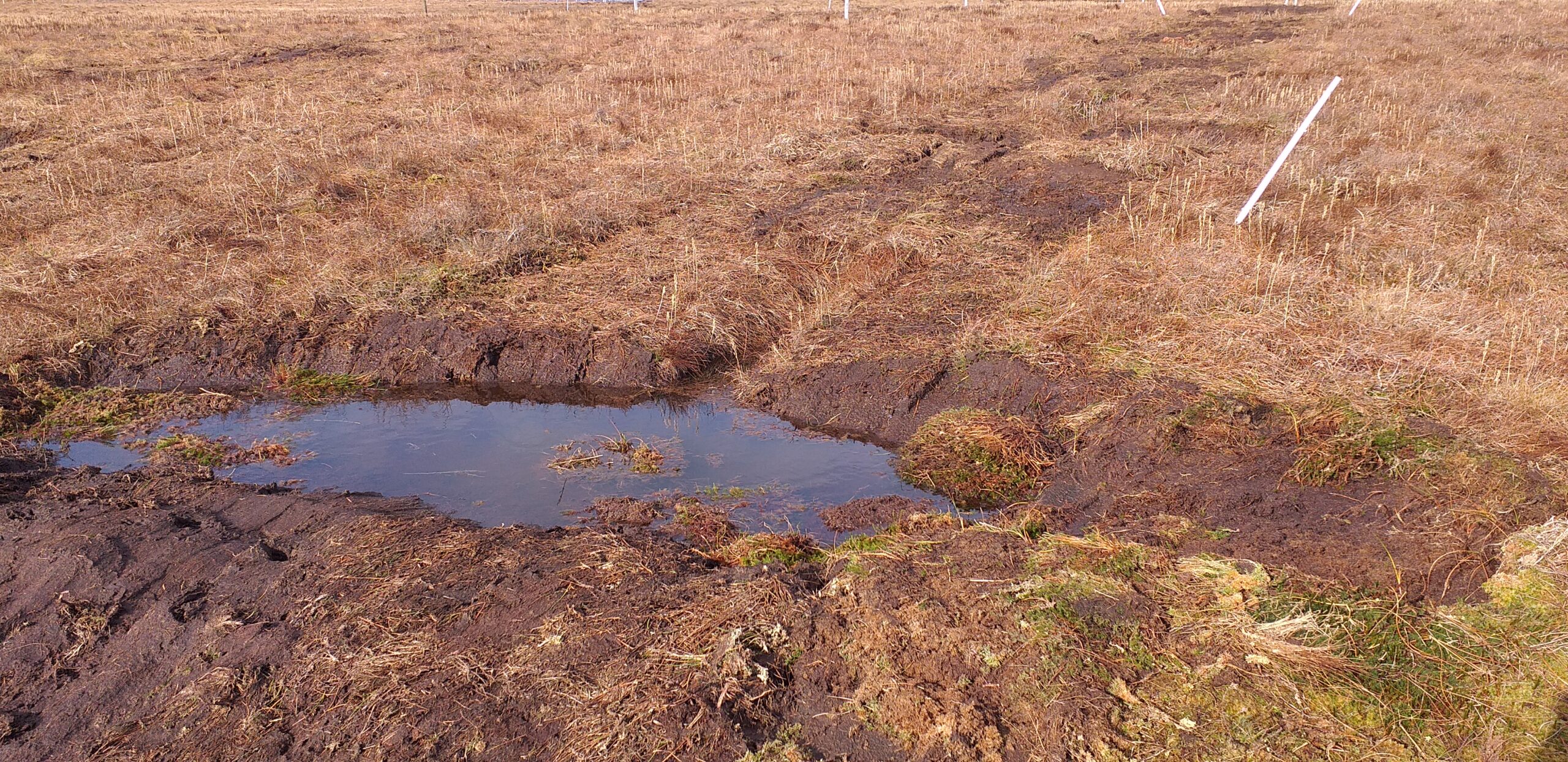Re-wetting open moorland
To achieve blanket bog in good habitat condition which can support a range of sphagnum mosses, as well as sedges and heathers requires a consistently high water table.
The target for CAFRE Hill Farm blanket bog is to raise the water table to achieve a water table depth (WTD) within 10-15cm of the surface for 90-95% of the year. This will allow the restoration of Peatland Accumulating Condition (PAC).
A recent study considering worldwide peatlands concluded that an average 10cm rise in peatland water table was the equivalent of a 3 ton CO2 eq emissions reduction per annum.(1)


Front Point Project
This moor has minor open drains every 10-15m apart. A 3 hectare trial area was drain blocked with peat dams and borrow pits every 10m in Feb 2021. A further 9 ha was drain blocked in February 2022 with a range of methods including in situ and borrow pit, peat dams, wave damming, zippering, plastic piling and plastic film inserts. Different methods and intensity of use are required for a range of drains and slopes. The newer methods of wave damming and zippering used in Feb 2022 show much better potential at reducing erosion around peat dams on sloping sites.
Plastic inserts and in situ peat blocks have been trialled for sphagnum infilled drains and plastic piling for high intensity drains are also demonstrated. The drains and blocking methods are recorded on a GPS device for future monitoring.
Dip wells to record Water Table Depth (WTD) have demonstrated a yearly average WTD reduction of over 10cms in the 2021 trial area. However the summer reduction is more significant with a WTD of 10-20cms in the re-wet areas versus 50cm depth in the drained control. The vast majority of emissions from drained peatland occur in the warmer summer months and are increased by a cycle of drying and re-wetting.


Reference
- Evans, C.D., Peacock, M., Baird, A.J. et al. Overriding water table control on managed peatland greenhouse gas emissions. Nature 593, 548–552 (2021). https://doi.org/10.1038/s41586-021-03523-1
